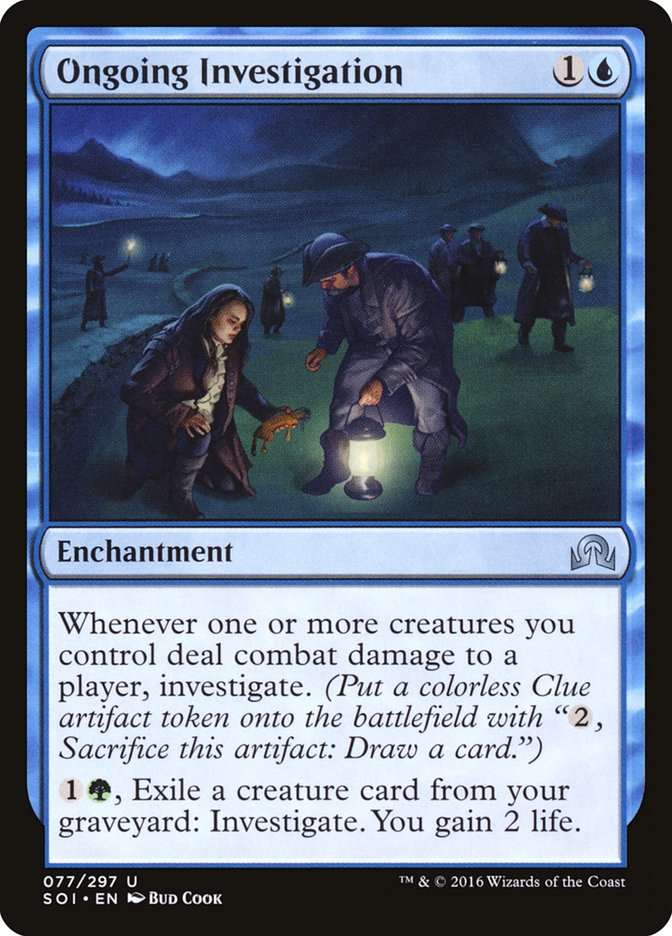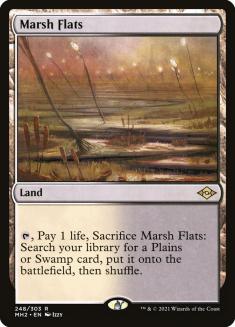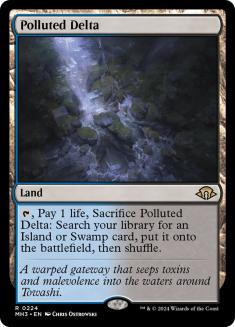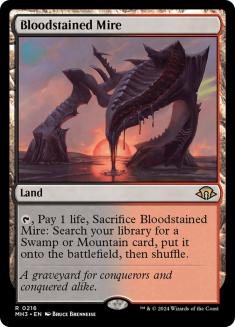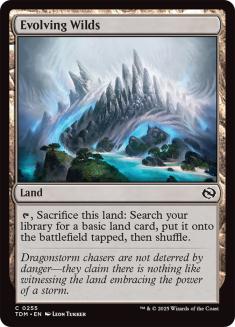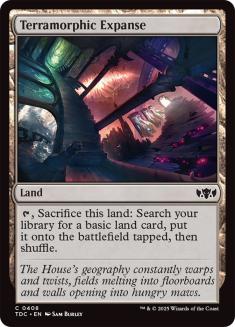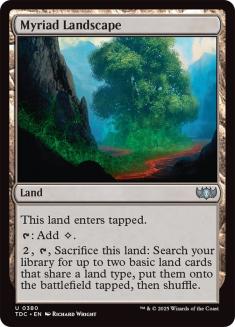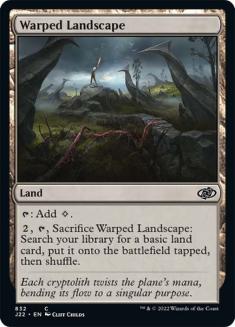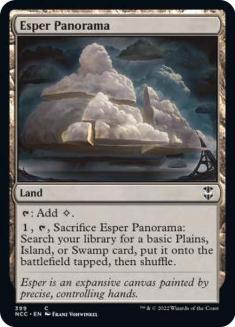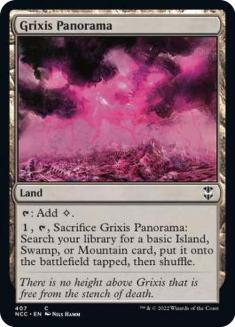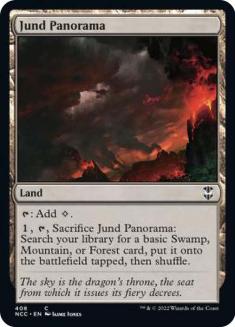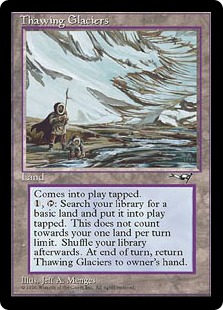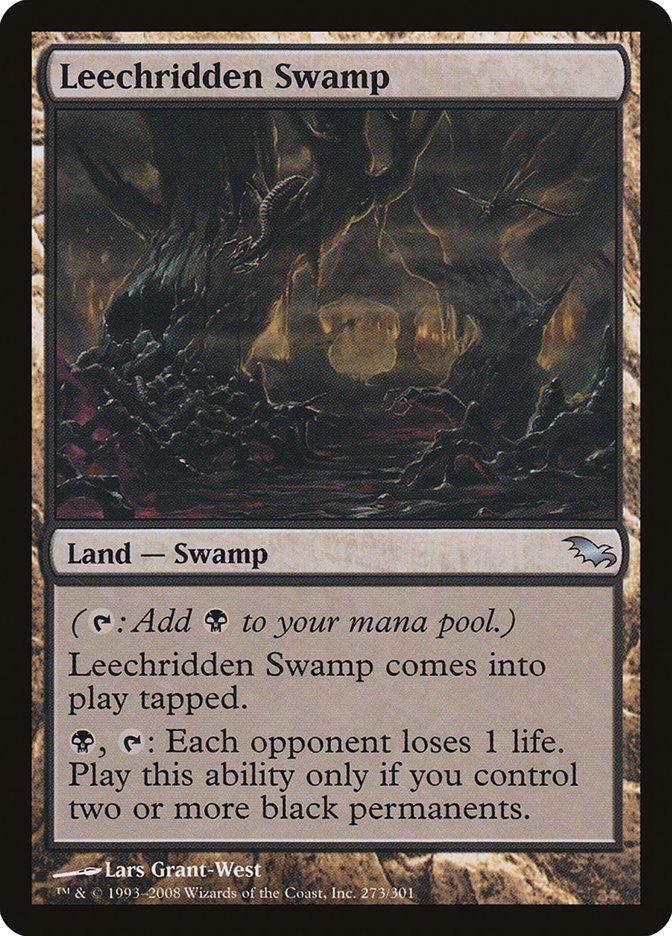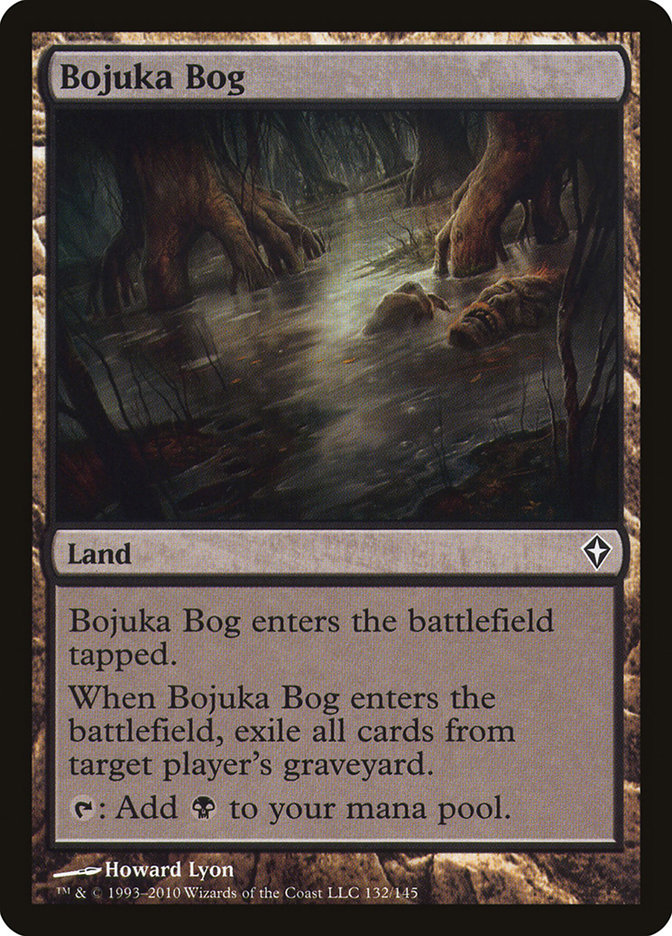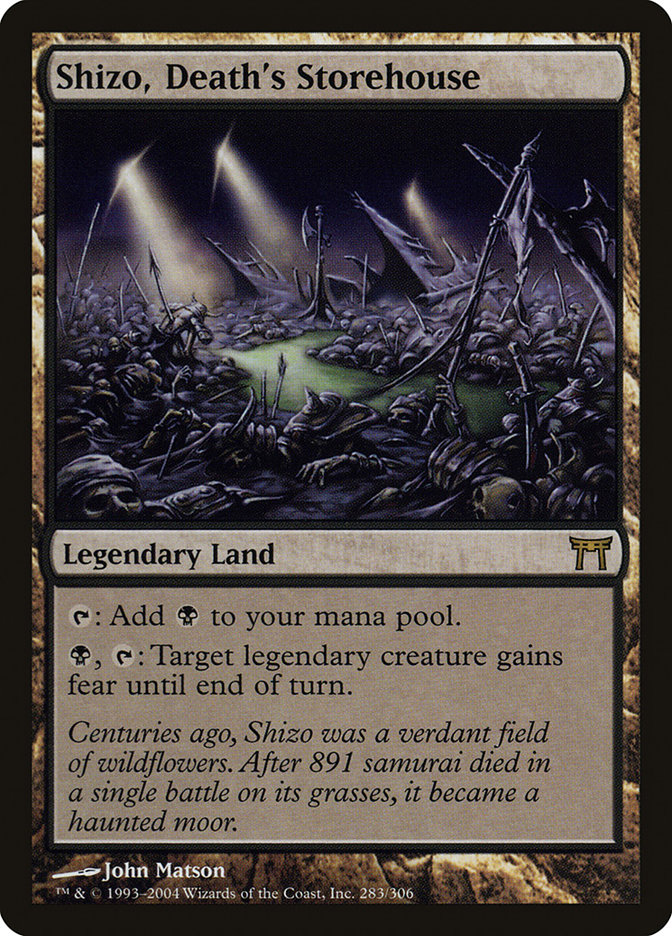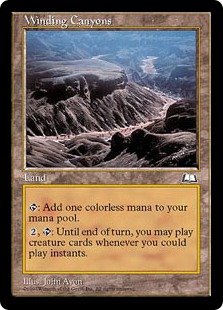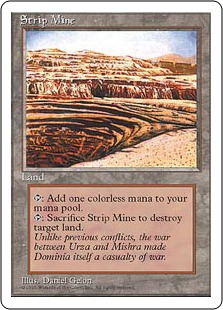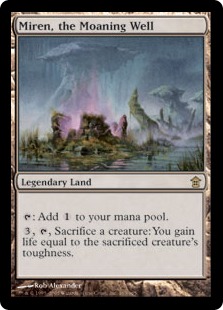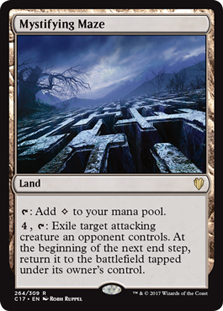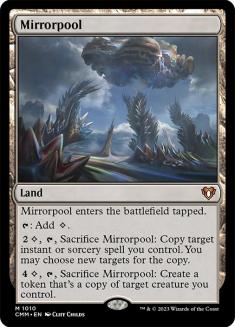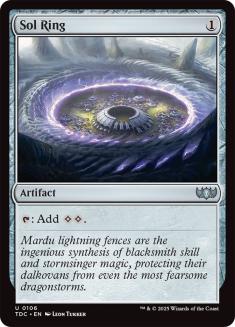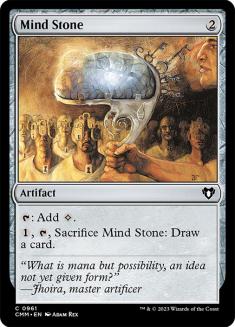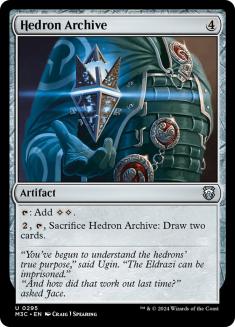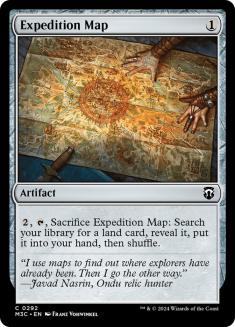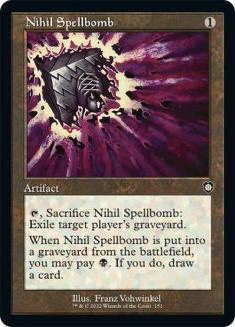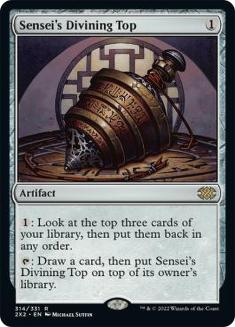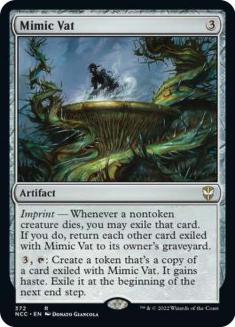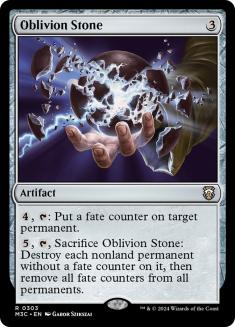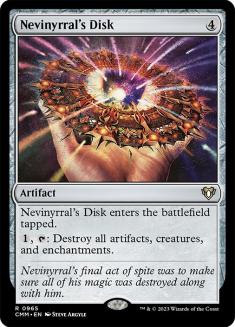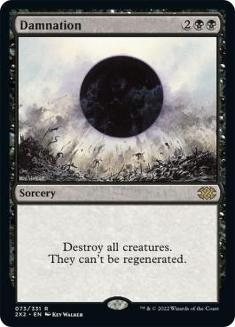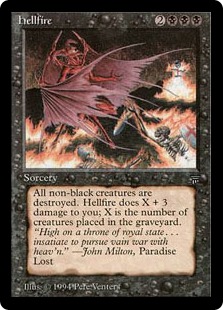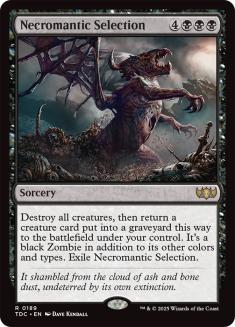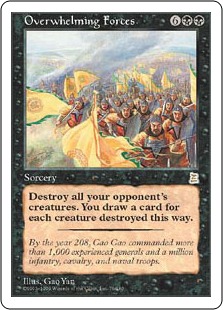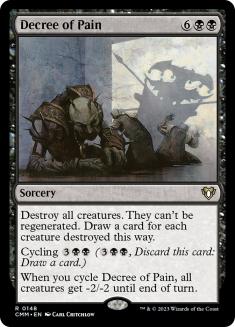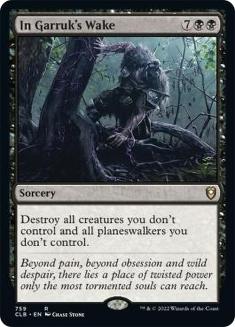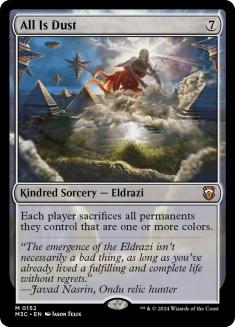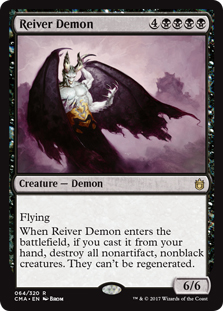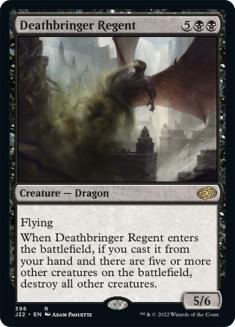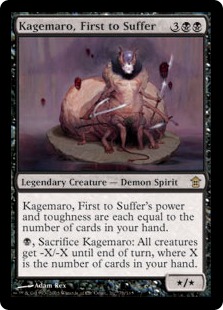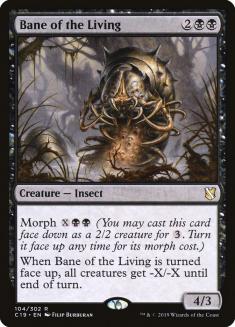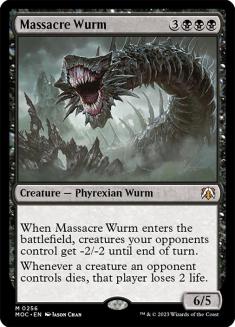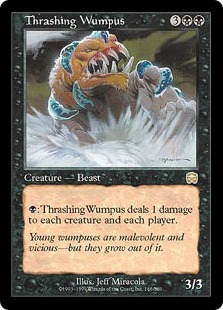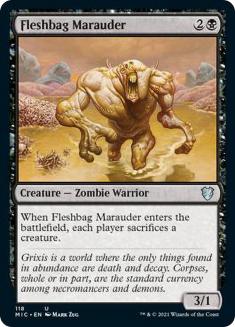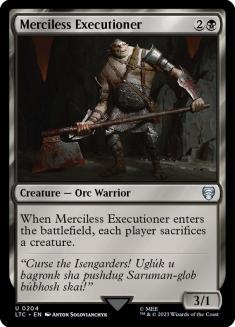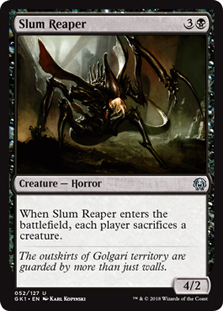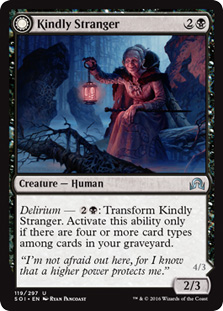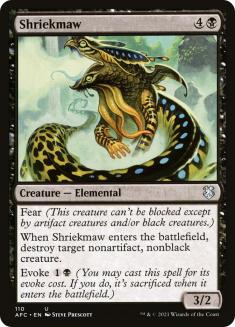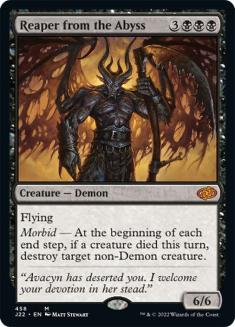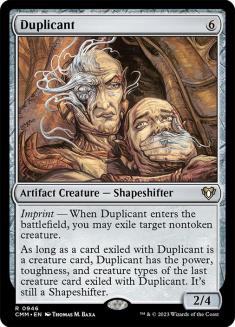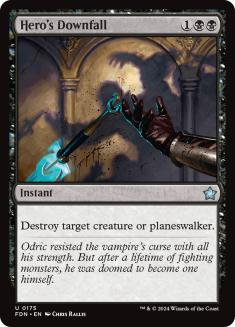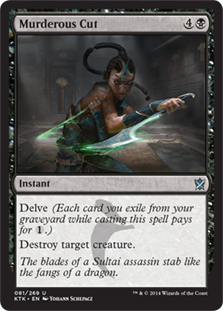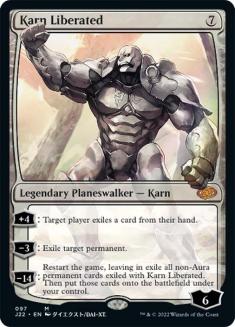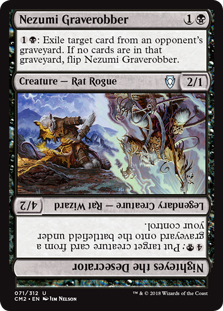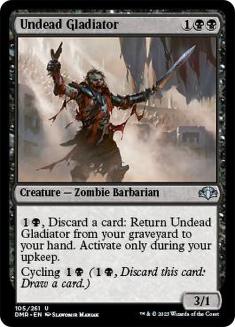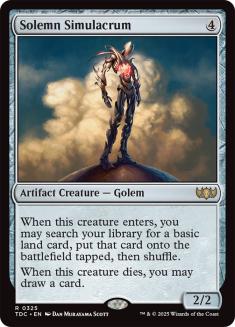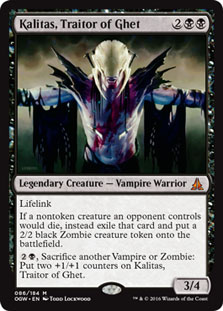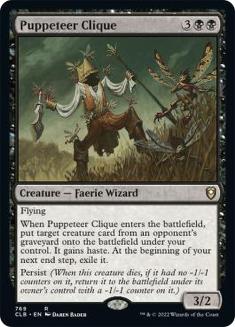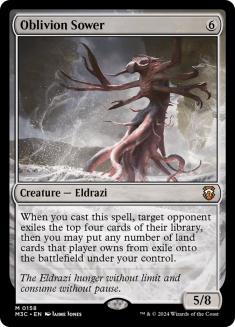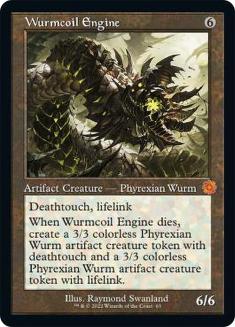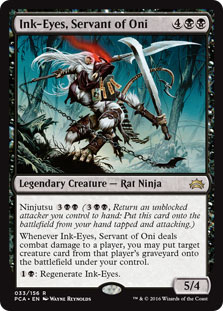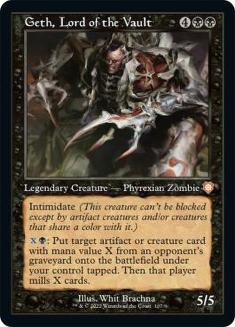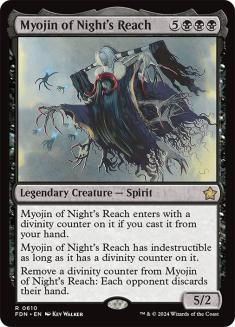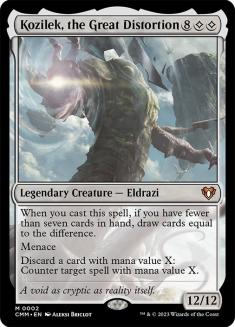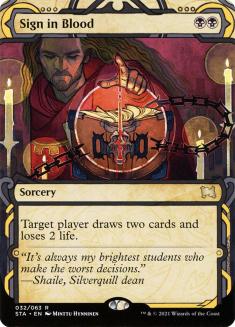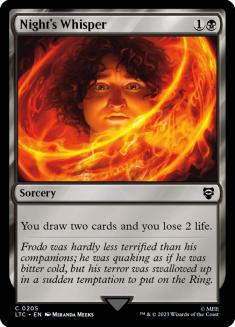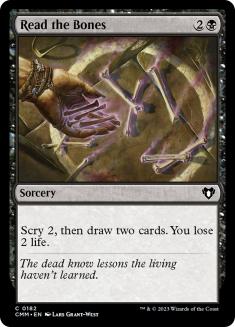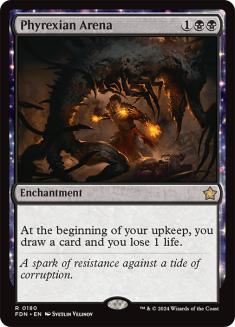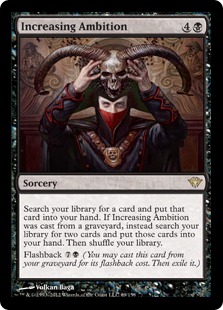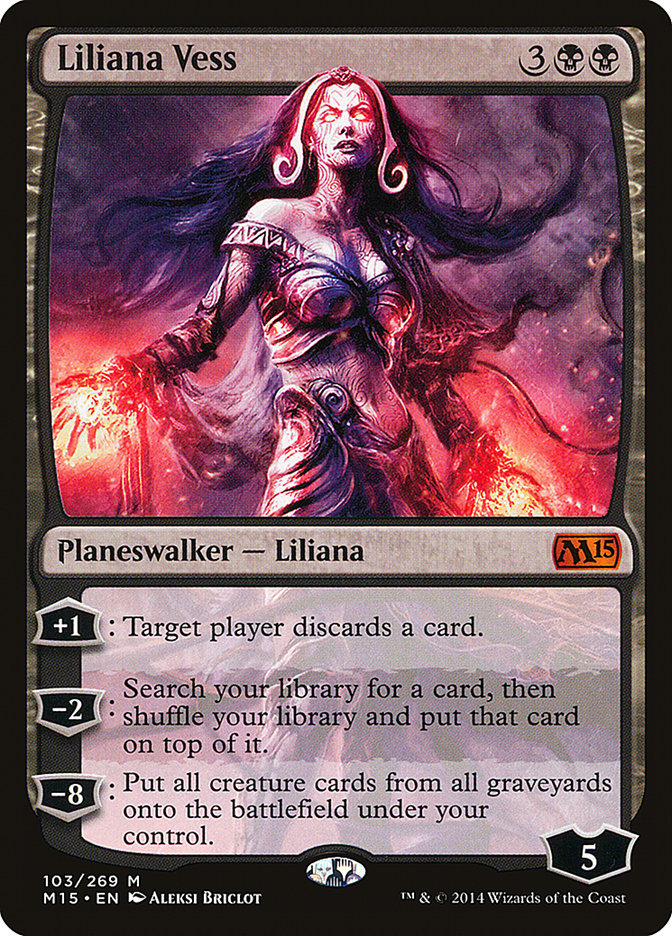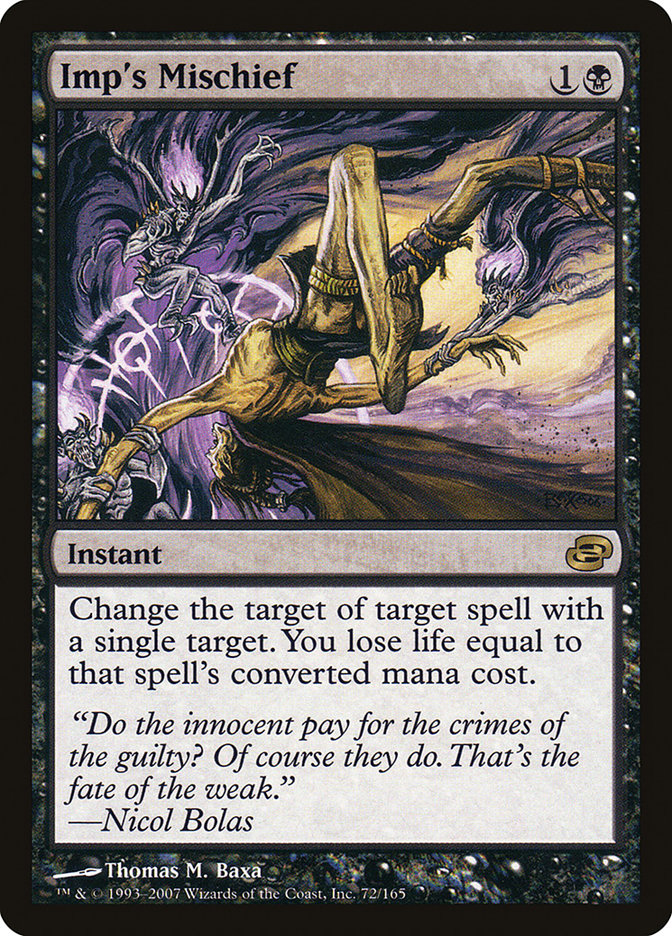 Resolute Blademaster over Guardian of Tazeem, but I was 100% sure to make that pick the same way every time.
Resolute Blademaster over Guardian of Tazeem, but I was 100% sure to make that pick the same way every time.
I couldn’t let myself stay in that unhappy groove, so my only bias going into the draft with “don’t draft The Red Deck.” I had been looking at Shadows over Innistrad with blinders on, so many of the cards seemed like they just didn’t even have text to me, but it seemed likelier that I was blinded by bias than that Wizards of the Coast screwed up when revisiting the plane that brought us what was probably the deepest and most interesting Limited format of all time.
I took some blue cards, then a few black ones, then I got bored and took some green ones because frankly I was all over the place. I still didn’t think my cards had text because a lot of them seemed to say “do this small thing, but Investigate” and I prefer my cantrips to not ask for two more mana before I get to draw my card. Then some things happened and I walked into the U/G Clue deck, but even here my blinders were still on… and this time it was my Commander bias showing.
I hate lifegain. Cards that involve lifegain don’t even feel like cards to me; paying a lot of mana for a lot of life just feels like overspending for the right to discard a card. I know life management is valuable and any resource can be worth having, but if you put a Congregate in my hand, I will give you back two of them… or at least two halves of them.
I had to choose between playing a seventeenth land in my low-curve, Clue-heavy deck or trying this thing out, and I was really torn:
The Coastal Piracy side seemed like it could maybe do something interesting. I had a few fliers and some of my creatures had skulk, so getting through unblocked and drawing an extra card each turn was a real possibility. I definitely wasn’t going to play it for the two-mana lifegain ability, but even I would use it when it was right to do so, I just wouldn’t include the card in my deck because of it.
The first time I gained two life, it gave me a Clue. My blinders were on so tightly I hadn’t even seen the word “investigate;” I’d just decided it must be awful because it was lifegain. Then things got weird – during the second round I re-built my deck post-sideboarding around the card somewhat when matched against a super-slow U/W control deck, and after Clue-ing my way through my entire deck, I went well past 40 thanks to an Epitaph Golem I’d picked thirteenth and assumed was blank cardboard I was taking over a basic land and a Vessel of Volatility.
Having destroyed my opponent by restocking my deck with cantrip after cantrip, it was time to admit this set was for real and it was me who was terrible. Any Limited format where a U/G deck is actually synergistic is good enough for me.
Then I heard that Jess was going to step back from Dear Azami, and that left a giant question – was I in or was I out?
Being “in” meant playing Commander again, and not just a little – I can’t write about something I don’t play, and I hadn’t been finding the time to even try lately. I have just one deck assembled at the moment, a Gwendolyn di Corci “card count matters” deck that isn’t quite where I want it to be and is probably obnoxious too because the thing it’s focusing on is so drearily reductive, and physical cardboard wasn’t going to matter anyway: to get back into Commander, I’d have to get back into it on Magic Online. That’s just the reality of the situation for me right now as far as free time is concerned.
Coming back to the column meant coming back to Commander meant coming home, and that meant I knew already who my Commander had to be: Ob Nixilis, the Fallen.
We Can Rebuild It, We Have the Technology
It has been years now since I’ve put Ob Nixilis, the Fallen together, so it’s better to rebuild it from the ground up than to take out the same 99 cards, see what’s had a reasonable update lately, and try to sub in new cards where they are more powerful. The idea of this deck is simple: we are playing mono-black control because it is fun and satisfying to play The Rock, and we are aiming to be an ultimately fair creature-based control deck that grinds out opponents via card advantage.
The goal is to play a great game of Magic for about an hour, always having plenty of relevant things to do, and ultimately win or lose based off of how well we play rather than how well we draw. Against more-broken opponents, we have a few nasty tools we can lean on, enough mana ramp to let us get to them in time if we’re lucky enough to draw them or a Tutor to find them, and, as an added bonus, Ob Nixilis, the Fallen can deal 21 Commander damage shockingly quickly thanks to our high number of fetchlands if our opponent is trying to be completely non-interactive. One fetchland lets us attack for nine Commander damage the turn after we cast Ob Nixilis, and from there just making another land drop on the following turn lets us attack for twelve and get that critical 21st point of commander damage.
Hitting someone with a fast and uncomfortably large Commander is sure to draw some ire, though, so the key again is how you play rather than what you can do. I spent much of this past week forgetting that key lesson and just playing Ob Nixilis on turn 5 whenever I had nothing else to do, and it took me a few games to realize that was also why I spent much of this past week feeling unduly targeted by opponents who teamed up to take me out, as my goofy commander and unusually-aggressive style of play marked me as the clear biggest threat at the table. It also hinted to me that I needed to drop my mana curve a little if I wanted to have other strong plays on that turn before the power six- and seven-drops start to come online, so what I am presenting here is the re-balanced version of the deck rather than what I had been playing with in my concerted effort to love mono-black control again.
We begin with the lands. Some of it is boring, but it’s amazing to me just how many low-key fetchlands we can play today if we want to. This not only makes Crucible of Worlds effectively a one-card combo that lets us make our land drops for free until late in the game, it also makes Ob Nixilis, the Fallen stronger as it’s easy to have a couple of extra fetchlands hanging around and just tapping for mana normally until it’s right to deploy Ob Nixilis, the Fallen in the later stages of the game. We also have so many good nonbasic lands these days that there is a real tension between colored mana and colorless lands, a tension which has been made all the more difficult by the recent addition of colorless mana as a distinct thing in mana costs, thanks to Oath of the Gatewatch and its left turn at Albuquerque that no one had seen coming.
Ob Nixilis, the Fallen is now powered up by a full dozen effective fetchlands… though, to be fair, some are more effective than others:
Add to this a dozen Swamps and we’ve got 24 lands marked out; based on prior builds of this deck and how many mana rocks I expect to add to it, I’ve got space marked for 37 slots altogether. That leaves thirteen holes to fill, and we’re torn between a desire for utility and a desire for colored mana. There are plenty of black-mana-intensive cards here and only a few things that reward us for keeping colorless mana available at any stage in the game, so with half of our fetchlands already tapping for colorless, we can only afford a few colorless lands before our draws start to get jammed up unduly.
Urborg, Tomb of Yawgmoth and Cabal Coffers are obviously great inclusions, as drawing them together results in a powerful mana engine that lets us do all sorts of other crazy things. We have enough Swamps around anyway to power the Coffers normally, and enough people play Urborg that we won’t even have to rely on drawing it ourselves to gain its benefit in many games. Barren Moor and Polluted Mire are low-power inclusions that are nonetheless of considerable value to us; we want to draw the right number of lands and not have too many dead draws later on in the game, so their “spell-like” function is to be cashed in for a new draw when we don’t need them early.
Three more colored lands suggest their inclusion:
Leechridden Swamp is the lowest-impact of these, but it’s not hard to find the time to sequence a nonbasic Swamp that enters the battlefield tapped off of our “real” fetchlands and it has enough added value that it’s worth the slot. It’ll generally be good for a few points of chip damage in any given game, helping with the overarching plan of playing our own game while slowly grinding down our opponents. Bojuka Bog is a powerful way to stop anyone focused on graveyard recursion, which in Commander can be basically everyone at the table, but thanks to a new Battle for Zendikar card, it actually has an active mode that allows us to advance our own game through its tactical usage rather than just a defensive one. Having Ob Nixilis, the Fallen on the battlefield when Oblivion Sower gets cast is downright shenanigans.
The last addition, Shizo, Death’s Storehouse, considerably increases Ob Nixilis, the Fallen’s danger level. Threatening to make our hard-hitting commander unblockable really changes the dynamic of how the game plays out, so just having this on the table forces our opponents to pay attention and limit the things they do to what is prudent rather than what is best.
The colorless lands are mostly the same as I’ve been playing for years:
The first four have earned their way into the deck by sheer dint of their utility repeated over years… as has any discussion I could possibly have about Winding Canyons, which I have been talking about ever since Edition #2 of this series. Homeward Path is a very potent inclusion that I’ve hedged about before, but I’m including it here because it is great at shutting down opponents who focus on stealing our stuff, and a single land addition that creates that many problems for a strong archetype has to be respected. The new addition, Mirrorpool, is interesting thanks to the variety of ways you can benefit off of it and thanks to the fact that we’re already aiming to play Crucible of Worlds. Sometimes the spell-copying side of the card will let us get around countermagic and sometimes it’s just another removal spell; sometimes the creature side copies a Duplicant at instant speed and sometimes it’s just another copy of our best threat every turn thanks to assembling the Crucible combo. The applications aren’t obvious and it increases our possible lines of play on any given turn at a very low cost, so I’m happy to give it a home and see how it turns out.
Half of our artifacts could be counted as part of our manabase too, so let’s look at them next:
I like acceleration that can be cashed in for card draw again later in the game, especially thanks to the fact that I play a good number of cards that blow up everyone’s artifacts. I am especially pleased to find a home for Hedron Archive, having long suspected they’d eventually fill in the gap between Mind Stone and Dreamstone Hedron but not generally wanting to pay six mana for that effect in the first place. We’re built to optimize around Crucible of Worlds already, but it’s kind of crazy just how good it’s gotten in this deck as more cards are printed. Myriad Landscape does naughty things with it turn after turn, and even a weak fetchland like Warped Landscape is much better than it has a right to be in a deck like this.
Because we’re ultimately aiming to be a fair creature deck full of swinging fatties, equipment cards are going to be less relevant than you’d normally expect. You won’t see a Skullclamp here, even though it seems like it would fit in with a lot of other things we are already valuing. We have room for two of them – Batterskull and Sword of Light and Shadow – and we’re interested in them specifically because of their ability to grind out a game.
It doesn’t hurt that they can gain us back a steady supply of life, either… as much as I dislike lifegain, I still can respect the fact that gaining back a chunk of it turn after turn by equipping Ob Nixilis, the Fallen with Batterskull can save us a lot of cardboard by being able to simply withstand a lot of what else is going on at the table. A considerable number of our cards ask for life as part of a payment or deal damage to us incidentally along the way, so having a few ways to make the life total go up instead of just down is going to prove worthwhile.
Five more slots begged to be filled here:
Nihil Spellbomb has regularly been at the outskirts of inclusion in this deck, but in this build we’re actually able to use it actively to further our gameplan via Oblivion Sower rather than just use it as a passive defense card against future recursion. Sensei’s Divining Top just keeps getting better and better in this deck as more fetchlands get printed, even “bad” ones, so there’s no surprise there… and Mimic Vat is very likely to imprint a creature that is effectively a removal spell out of our deck, so it’s going to be quite a strong source of card advantage if it is left on the battlefield for a few turns.
Nevinyrral’s Disk and Oblivion Stone start leading us down the path we want to go anyway. In our “Rock” deck we’re basically going to use mass removal the way normal builds of The Rock use pinpoint removal. Facing off against three opponents makes it hard to trade cardboard on a one-for-one basis, so we want as many Wrath-type effects as we can reasonably get in order to control the battlefield and keep our plans for world domination alive.
Kill All Creatures
Victory, for this deck, looks like a lot of dead creatures in opposing graveyards. Failure, for this deck, looks like no creatures on our side of the battlefield and few cards in hand turn after turn. Killing all opposing monsters only gets us somewhere if we’re able to attack with our own creatures in the meantime, so we’re looking to take advantage of as many preferential Wrath effects as we can, as many creature removal effects as we can find stapled to creatures, and a few cards to help make sure we always have something going on, the kind of recursion effects we’d noted above that will allow us to trade nothing more than just time and mana for actual cardboard.
The skeleton of this deck is going to be building card advantage and getting lands onto the battlefield cheaply if we can manage to, but the meat on those bones will come from our fatties and mass removal. That’s where the format really starts to get played, after all – there are the setup turns and the support cards, but the things that really swing a game do so either by changing the battlefield massively or by being a serious threat all by themselves. The good news is that there have been a lot of high-quality additions printed in recent years, so we aren’t even going to play several good Wrath effects. If you’d told me when I first built this deck that they’d print Crux of Fate and I wouldn’t end up playing it, I would have found that very hard to believe.
For mass removal, we have the following:
Some of these are a little hard to call true “mass removal,” but Massacre Wurm and Thrashing Wumpus do good work at keeping the rest of the battlefield manageable, so they’ve happily earned their spots over and over again in this deck. There’s plenty more removal where that came from, though, once we add in the following:
Traditionally I have liked to have a zero-cost removal spell in here so that opponents can’t guarantee that I’ll die just because I am tapped out. There are very few of those, so we’re left to pick between Sickening Shoal, Snuff Out and Slaughter Pact; usually the Pact wins that argument. But “having extra cards in your graveyard” is almost no requirement at all, so the cheap reliability of Murderous Cut at one mana has pushed it to #1 in my heart for low-cost removal here, and I’ll just have to remember that it’s never safe to tap out but I can often tap low without being too sorely punished.
Some of these additions are very recent – Kindly Stranger was given a slot as a joke at first after several positive experiences in Shadows over Innistrad draft, and we only recently got a second functional copy of Fleshbag Marauder – while others come from my continued exploration of ancient, long-forgotten sets to see whether I can make old cards do new tricks. Hellfire is my latest obsession in that regard, as a potential one-sided Wrath that spends life instead of the extra mana usually required to generate such a powerful asymmetrical effect, and I am often happy to trade a bit of life for a lot of power. We have to actively keep the curve down here, so I’d rather give Hellfire a try at five mana than try to make Dread Cacodemon work at ten.
The speed at which we can deploy our high drops is our major limiting factor, so we have to build the deck with a mana curve in mind. Commander requires discipline, after all, and sometimes that means playing the cheap support card over the splashy power card; something has to happen between that first land drop and that last ten-mana bomb.
We have thirteen creature slots filled so far, and given how very much trouble we can get ourselves into if we’re left without action in the later stretches of the game, I want to build with 25 slots dedicated to creature cards. We aren’t the only ones playing removal, after all, and our work to position us properly for the late-game grind will become just so much empty posturing if we can’t actually kill our opponents. Half of the remaining dozen slots will be cheap support cards, while the other half are going to be self-contained threats, an “army in a can” as it were, the kind of card that has such a great impact on the board that you can rely on it to close most games out quickly.
This deck has a minor reanimation theme, and if you leave Nezumi Graverobber unopposed for several turns, you’ll see what happens when a small card turns into a big game. A good portion of this deck has a minor focus on constraining an opponent’s recursion plans, so newcomer Kalitas, Traitor of Ghet is perfectly shaped for our exile-conscious and sweeper-heavy deck that also welcomes a bit of incidental lifegain attached so long as it’s for free. All of our exile effects happen to set us up very well to make great use of Oblivion Sower, and what began as a running joke to see if I could get lucky a little bit more often than I should quickly became no joke at all when “Bojuka Bog and ramp” turns happened or the Sower came with a half-dozen landfall triggers for Ob Nixilis, the Fallen attached.
Puppeteer Clique doesn’t look like it does very much, but between the exile clause and the ability to access an opponent’s graveyard for fun and profit, it’s always a good mix of strategically awesome and incredibly powerful. It’s probably the weakest creature in the deck at this point, or at least tied for it depending on whether you laughed when I added Kindly Stranger, but it’s also the one I’ve had the most fun with historically in this deck, so I’m happy to trust that something interesting and powerful will happen whenever it turns up.
Playing with your opponent’s graveyard is often even better than exiling it, as it turns the resources they’d aimed to keep around as a sort of second library into your resource instead. Anything that changes an opponent’s strength into a liability is worth pursuing, and recursion effects are so common a strength in this format that we can focus on it broadly without sacrificing anything against most opponents. Playing Geth onto an empty battlefield with a bunch of extra mana available should convert into a win over just a few turns, and Wurmcoil Engine will always do something worthwhile between its lifelink, deathtouch, and sheer resilience.
The two Kozileks are there to be late-game powerhouses – the Butcher of Truth dies to anything, it’s true, but it always nabs you four cards before doing so. The Great Distortion can draw you even more than that, since it’ll draw you up to seven cards if it’s the last one in your hand, and while the cost-matching counterspell function is not something to be relied upon, there are some frequent commonalities in this format: the four- to six-mana slots are the “sweet spot” of the format, so the fat part of this deck’s curve can all be discarded to stop major threats or answers.
Myojin of Night’s Reach will lock the doors when it’s time to Daenerys Targaryen everyone; an opponent with no cards in hand is reduced to just whatever on-table tricks they have and you can definitely see them all coming. It’s kind of a jerk move, so I don’t aim to lean on the card, but it’s also one of the few ways you can keep a combo deck in check. It’s here for that mix of strategic utility and unique effect, even though it can generate some real feel-bad moments in an otherwise-friendly game.
The Supporting Cast
We’ve mentioned the big cards already. Ten-mana threats are high-impact, and they tend to get a lot of credit for closing the game out even if any of your kill cards could ultimately have filled the bill. Either Kozilek will leave an impression on the opponent, not just on their life total, but the critical support roles played by many a small card will often go unseen. You need to have cards in your hand in order for those big cards to appear, and it’s the cards that build up your advantage or provide added resilience turn after turn that will really grind out a long game.
The two grindiest cards in the deck are easy to miss, but they’re very important. They’re hard to interact with and they turn mana into card advantage turn after turn, so when it’s time to close out the game, either one of these will help provide you with a steady stream of resources:
Corpse Dance does a lot of things – combined with our removal creatures, it’s a removal spell with buyback, and because it has a delayed trigger (the creature goes away “at the beginning of the next end step,” so it can be used in an opponent’s end step to good effect), you can use it to set up big attacks out of nowhere as well as surprise blockers, or repeatedly trigger a strong enters-the-battlefield ability. Grim Harvest is a little tougher to use, as it relies on a creature dying to trigger its Recover mechanic, but to make up for that it offers you whatever creature you want rather than just the top one in your graveyard. (Cards used to care about the darnedest things!) Grim Harvest will work with any of our removal creatures, including the ones that care about being cast from your hand – and unlike with Corpse Dance, your investment of extra mana provides you with a threat that can last for multiple turns.
Both seem innocent, but they are the extra rocks in the sideboard of our Rock deck when we need to grind even harder.
A little bit of card advantage goes a long way, and the cheap draw effects here keep the big cards rolling your way without taking much of a turn to do so. A little bit of tutoring is good but too much gets boring very quickly, so I’ve limited the deck to just the very best ones: Demonic Tutor because it’s the cheapest, and Increasing Ambition because it’s the most powerful you can get without going too far in that direction. Early on it gets you whatever you think it’ll take to improve your hand while leaving a late-game resource waiting in your graveyard; later in the game, it’ll likely search for Cabal Coffers and immediately flash back to close out the game with your two best targets.
I’d be happy to play six or seven copies of Read the Bones, but the key is the cheap cost; I’ve played Skeletal Scrying and Promise of Power in some of these slots before, but ultimately what I’m looking for is a cheap effect rather than a lot of cards. With a bunch of mana we can already draw a lot of cards via Overwhelming Forces or Decree of Pain, so we’re focusing on early-game draw stabilization rather than raw card-drawing power.
We have six slots left, and at this point we’re looking for a few key effects. At four mana you can play several identical copies of the same card to pay three life and draw three cards, but Syphon Mind asks for zero life for those three cards while making each of your opponents discard a card as well. Instead of playing a third straight-up Tutor effect, we can play a second planeswalker and potentially reap its benefits by choosing Liliana Vess, adding a bit more discard as an option alongside that tutoring option… and an ultimate ability that’s so strong in Commander that they ended up making it as a card by itself, Rise of the Dark Realms.
Necromancy doesn’t seem like a very interesting card; after all, there are a whole lot of reanimation cards you could play if you want to. Some of them are cheaper while others have extra benefits like reanimating multiple creatures, but as a general rule, the thing that they do not do is work at instant speed. Reanimation’s not something we’re optimizing for – we’re mostly going to be targeting cards we’ve paid full price for already or creatures we killed with one of our sweepers – but one of the deck’s key weaknesses is that it’s hard to operate at instant speed while getting the kind of big effect we’re hoping to squeeze out of our cardboard. We’re going to lean harder than usual on Winding Canyons because of this, and it’s also why creatures whose effects can be used at instant speed are so valuable to us. Getting a trick like this is quite unusual, so we should take it when it’s on offer.
For a really big effect at instant speed, we have to save a slot for Sudden Spoiling. It’s really well-named… it sure does spoil an opponent’s best-laid plans. When you absolutely, positively need to not negotiate on the outcome, you can’t beat Split Second. (Hush, Willbender, nobody plays you anymore…) Alongside another of our cards like Thrashing Wumpus or a cycled Decree of Pain this becomes a one-sided Wrath effect, and it’s great at breaking up big combat turns or creature-based combos. One of our primary weaknesses is to other people telling us “no,” after all, so it’s great to be able to just stop something cold whether our opponents like it or not. By itself it doesn’t do much more than Fog a single attack, but in the context of what we’re trying to do, we can reliably get a lot more than a single card’s worth of cardboard out of it.
Imp’s Mischief also gets slotted in for similar reasons; we don’t have a lot of ways to sneak something past countermagic, dodge pinpoint removal, or break up a spell-based turn, and Imp’s Mischief can do any of those things if you play the card right. While it can be quite painful as you scale up – redirecting a Cruel Ultimatum costs you seven life, and redirecting a Fireball pointed your way won’t do much to save you – it’s a small price to pay if you manage to jam somebody’s plan for a little mana and a bit of life. Despite my biases against lifegain, I’ve made sure to include a reasonable number of ways to recoup it so we can actively exchange it as a resource, so this should still be live later in the game as spells get bigger and more powerful. Misdirecting big things has a big effect, and it’s not exactly something people typically include in their thinking when they try to figure out what the worst thing that could possibly happen to them is.
For our last slot, I have played a lot of different cards – anything going in here is competing with our next-best Wrath effect left on the cutting room floor, the next-most-powerful pinpoint removal spell or cheapest tutor… it could even just be another threat. I wanted something that amplified our other cards’ efforts already, something that would reward us for doing what we’re good at (like Kalitas does) or make it easier for us so we can hold onto more of our cards.
Even though we’re nowhere near optimized to abuse the card, it’s not exactly hard to convince a black mage to add Grave Pact to their deck. We don’t have much in the way of tokens or even many instant-speed sacrifice outlets, but we do have plenty of things like Fleshbag Marauder and ways to reuse it! Prior experience with the card in this deck tells me that it serves as a great rattlesnake card that warns our opponents against taking aggressive action; we can usually rely on Grave Pact to clear our opponent’s big threats while Thrashing Wumpus and friends handle the smaller ones even though the card is kind of a rough fit here.
Putting it all together, we get the following:
Creatures (25)
- 1 Ink-Eyes, Servant of Oni
- 1 Solemn Simulacrum
- 1 Nezumi Graverobber
- 1 Myojin of Night's Reach
- 1 Undead Gladiator
- 1 Bane of the Living
- 1 Reiver Demon
- 1 Duplicant
- 1 Thrashing Wumpus
- 1 Kagemaro, First to Suffer
- 1 Shriekmaw
- 1 Puppeteer Clique
- 1 Fleshbag Marauder
- 1 Kozilek, Butcher of Truth
- 1 Wurmcoil Engine
- 1 Geth, Lord of the Vault
- 1 Massacre Wurm
- 1 Reaper from the Abyss
- 1 Slum Reaper
- 1 Merciless Executioner
- 1 Deathbringer Regent
- 1 Oblivion Sower
- 1 Kozilek, the Great Distortion
- 1 Kalitas, Traitor of Ghet
- 1 Kindly Stranger
Planeswalkers (2)
Lands (37)
- 1 Strip Mine
- 1 Cabal Coffers
- 1 Thawing Glaciers
- 12 Swamp
- 1 Polluted Mire
- 1 Shizo, Death's Storehouse
- 1 Polluted Delta
- 1 Bloodstained Mire
- 1 Barren Moor
- 1 Winding Canyons
- 1 Miren, the Moaning Well
- 1 Terramorphic Expanse
- 1 Urborg, Tomb of Yawgmoth
- 1 Leechridden Swamp
- 1 Esper Panorama
- 1 Grixis Panorama
- 1 Jund Panorama
- 1 Marsh Flats
- 1 Verdant Catacombs
- 1 Bojuka Bog
- 1 Evolving Wilds
- 1 Mystifying Maze
- 1 Homeward Path
- 1 Myriad Landscape
- 1 Mirrorpool
- 1 Warped Landscape
Spells (35)
- 1 Sensei's Divining Top
- 1 Nevinyrral's Disk
- 1 Corpse Dance
- 1 Sol Ring
- 1 Demonic Tutor
- 1 Mana Crypt
- 1 Necromancy
- 1 Hellfire
- 1 Grave Pact
- 1 Decree of Pain
- 1 Night's Whisper
- 1 Crucible of Worlds
- 1 Sword of Light and Shadow
- 1 Oblivion Stone
- 1 Phyrexian Arena
- 1 Syphon Mind
- 1 Overwhelming Forces
- 1 Mind Stone
- 1 Grim Harvest
- 1 Sudden Spoiling
- 1 Damnation
- 1 Imp's Mischief
- 1 Sign in Blood
- 1 Expedition Map
- 1 All Is Dust
- 1 Mimic Vat
- 1 Nihil Spellbomb
- 1 Batterskull
- 1 Increasing Ambition
- 1 Read the Bones
- 1 Hero's Downfall
- 1 In Garruk's Wake
- 1 Murderous Cut
- 1 Necromantic Selection
- 1 Hedron Archive

But more importantly, we get exactly the experience I remembered: enough sweepers to dictate the pace of the game, enough card drawing to always have something worthwhile left to do, and more than enough heavy hitters to finish the job even against stiff resistance. Many an opponent has laughed at the weird and quirky Commander they’ve rarely seen at the helm of any deck, only to find out the hard way that this deck works seamlessly as a complete package, and while the cards have changed over the years, the deck remains just as pleasing today as it had been when it first lured me into playing this weird and wacky format.
It’s good to be back.
Want to submit a deck for consideration to Dear Azami? We’re always accepting deck submissions to consider for use in a future article. Only one deck submission will be chosen per article, but being selected for the next edition of Dear Azami includes not just deck advice but also a $20 coupon to StarCityGames.com!
Email us a deck submission using this link here!
Like what you’ve seen? Feel free to explore more of Dear Azami here, in the Article Archives! And if you want to stay up to date with Jess, check out her Command of Etiquette column on Hipsters of the Coast!

